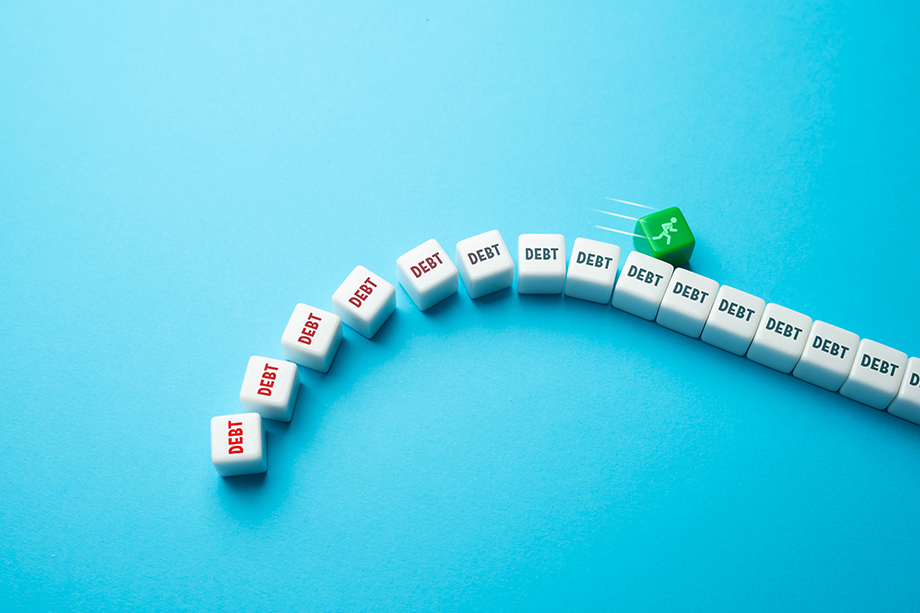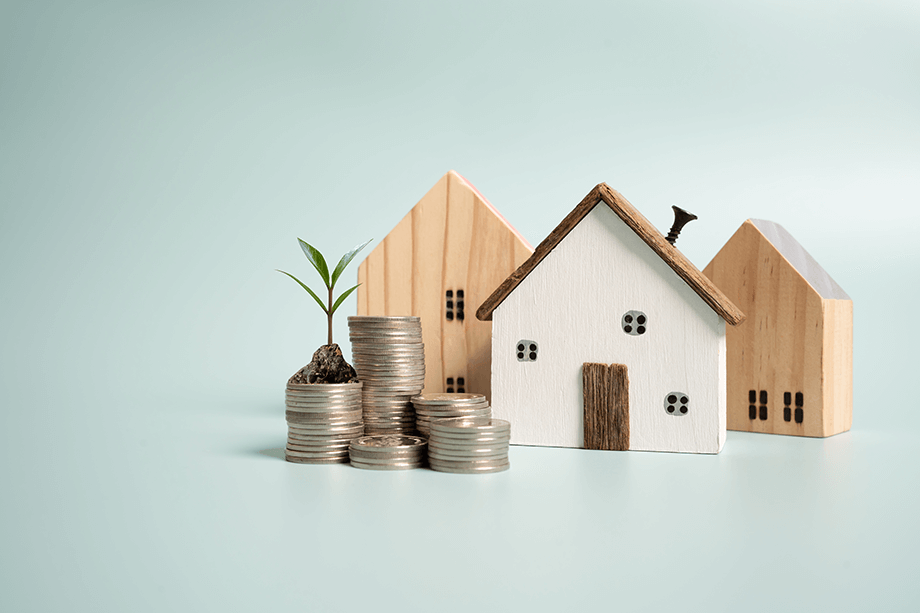Growing up, you probably heard the very common phrase repeated in your household: “Debt is bad.”
Similarly, Robot Kiyosaki’s poor dad – his natural father – lived by the same philosophy.
When Robert used a credit card to finance one of his first investment properties, a condo in Hawaii, his poor dad couldn’t believe it. “Why take such a risk?” he asked. The investment, however, wasn’t a risk. With the rental income, Robert covered his expenses for the credit card payment and had some extra cash afterward each month.
Poor dad, on the other hand, spent most of his life avoiding debt, taking it on only in emergencies. “ That is what credit cards are for,” he said. He also worked hard to pay off his mortgage and saved money to buy things cash whenever possible.
Robert’s rich dad, his best friend’s father, agreed with poor dad—to a point. “Some debt is bad,” rich dad said. “But some debt is good too,” he added.
He encouraged Robert to use his credit card for an investment if it made sense. For rich dad, everything was about context. Debt itself was neutral. How you used it, and in what circumstances, is what made it good or bad debt.
But exactly what is “bad debt?”
Good debt vs. bad debt
Today, many people are living by the old rules of money, the rules of the poor and the middle class. The so-called financial experts continue to preach the values of saving money, getting a good job, buying a house, and investing in a diversified portfolio of stocks, bonds, and mutual funds.
The problem with these strategies is that savers are losers because as the Fed prints record amounts of money, savings lose value, especially as inflation kicks in and grows faster than the interest paid on savings. Getting a good job doesn’t provide the security that it used to, and it’s actually the riskiest thing you can rely on. A house is not an asset, it’s a liability. And what people preach as diversification is not really diversification and is actually often bad financial advice.
Unfortunately, among the sacred cows of financial advice, lies the belief that debt is bad. That is what poor dad believed, and it’s what millions upon millions of people in the world believe as well.
Understanding the difference between good debt and bad debt requires an understanding of assets versus liabilities. Simply put, an asset is anything that puts money in your pocket each month. A liability is something that takes money out each month.
Again, this is all about context. Take for instance a truck. If your truck is a personal vehicle, it doesn’t put money in your pocket. It takes it out of your pocket in the form of a loan payment, maintenance and repairs, taxes, and insurance. Because of this, it’s a liability.
But if that same truck was used for a business as part of making money where the income would cover the cost of a vehicle, such as a construction fleet, it would be an asset because it would put money in your pocket each month.
Looking at the debt behind both scenarios, we can see the difference between good and bad debt. In this case, a loan for the truck as a personal vehicle would be bad debt because it is in service to a liability. But a loan for a truck used for business and that makes you money each month becomes good debt because it allows you to obtain an asset.
What is bad debt and why is it risky?
When rich dad heard poor dad’s ideology around credit cards (that they’re only good for emergencies), he simply chuckled. To rich dad, taking on debt only in emergencies was the worst debt of all. “It’s funny to me that people think taking on debt in an emergency isn’t risky but that taking on debt for investing is,” he said.
Rich dad believed taking on debt in emergencies was a sign of poor financial intelligence. It showed that you were living paycheck to paycheck, which meant you probably didn’t have many assets and probably had many liabilities. As rich dad continued to educate Robert, it became clear to him that bad debt was the riskiest debt of all, but somehow most people had been fooled into thinking it was necessary debt, while all other forms of debt should be avoided.
“Follow the money,” rich dad said. “Why do you think the financial industry wants people to only take on bad debt?”
The answer, of course, was people who were already financially in trouble and needing emergency loans, were also the same people who would not pay those loans off and continue paying interest to the debt holders for many years to come.
Rich dad and poor dad both agreed that it was good to only buy liabilities like cars, televisions, and more with cash rather than financing them. Rich dad agreed debt was bad when used for luxury items that lost value over time. But he differed from poor dad because he believed in using good debt to create cash for those things and more, while poor dad believed in saving and spending, and only using debt when it was an emergency.
While poor dad would save money and then spend it, rich dad would borrow money that made money for him to spend many times over.
Throughout this time, rich dad was teaching Robert a fundamental lesson that the rich know about money— good debt can make you richer.
The power of good debt
A simple definition of good debt is “debt that puts money into your pocket rather than takes money out.” For instance, when using debt for a business deal, a financially intelligent investor won’t do the deal unless the cash flow from the deal pays for their debt payment and expenses while providing a good return.
This assures that cash goes into their pocket each month, providing a continual income that allows them to enjoy liabilities.
The great thing about debt is it can allow you to leverage your existing cash into many assets.
For example, in real estate, you can buy investment properties with debt. The bank will give you a loan for 80 percent of the purchase price while you’ll only have to use your money—or someone else’s—for 20 percent of the purchase price. Your job is to find a deal that pays the bank the interest on the 80 percent while still providing a decent return on you 20 percent.
So, using simple math, if you have $100,000 in cash, you could buy one property for $100,000 that provides $800 a month in cash flow—a little over 9% annual return.
Or, you could use good debt to buy five $100,000 properties. The bank would lend you $80,000 for each property and you would divide your $100,000 into five $20,000 down payments. At 5% interest, the payment on the loans would be around $500. So, your cash flow on each property would be $300 a month ($800 in rent – $500 in debt payment = $300 per month) for a total of $1,500 ($300 x 5 = $1,500) per month—an 18% annual return. That is twice as much as if you’d only used your own money to invest.
Then, you can use the income from your properties to either invest in more assets, or buy something nice for yourself knowing that more cash will come next month from your investments. Rather than save and spend like poor dad, you invest and spend like rich dad.
That’s the power of good debt.
The rich used good debt to get richer in 2008
The difference between the rich and poor thinking on debt was on grand display during the Great Recession. While most people were fearful and saving their money, the financially intelligent were making a lot of money and borrowing more of it. Why? Interest rates were at the lowest in history and many assets were priced at bargain bin prices.
The financially intelligent understand they could borrow money at cheap interest rates and use that money to buy assets that provided cash flow that covered their debt payment and expenses while putting money in their pocket every month.
Both individual investors and large companies grew their good debt. As The Wall Street Journal reported in 2011, “Banks have lent $66.6 billion this year in five-year U.S. corporate investment-grade loans, some of the longest available, almost 25 times the amount for the same time last year, according to Dealogic. Investment-grade loans to U.S. companies have more than doubled so far this year compared to the same period in 2010. Junk-rated companies have also been able to raise debt at a record pace.”
Translation: Money was cheap so companies stocked up on it.
Similarly, Rich Dad Real Estate Advisor Ken McElroy – together with Robet Kiyosaki – spent a lot of time buying multi-family properties in prime markets. The easiest commercial loans to get during the time were Freddie and Fannie loans because the government wanted investors to provide affordable housing. So, they bought great properties at rock bottom prices with cheap debt. Now, over a decade later, most of those properties have sold at many times over what they paid for them. They are now actively investing that money in even bigger deals.
So, while many people were running away from debt, thinking it was bad, and others were going down financially because of bad debt (i.e., sub-prime mortgages for houses they were told were assets but were really huge liabilities), Robert was doubling down on good debt to get rich.







